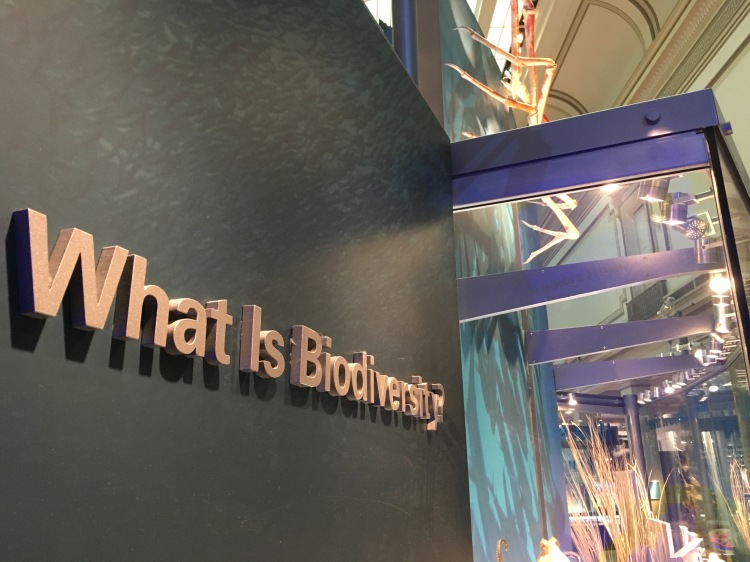This is a piece I wrote for our Department’s newsletter describing my experience as a Robert Hevey and Constance M. Filling Fellow at the Smithsonian National Museum of Natural History in 2019. Hands down, this was one of the most fulfilling experiences during my graduate career.

This summer I was a visiting scientist at the Smithsonian Institution’s National Museum of Natural History (NMNH) thanks to the generous support of the Robert Hevey and Constance Filling Fellowship. My morning bike commute brought me across the middle of the National Mall, in between the Capitol Building and the Washington Monument. I entered through the center of the museum, walked through the quiet atrium, and made my way toward a “secret” door in the geology section of the museum. Enroute, I listened to the exhibits come to life and observed new details, information, and questions displayed in the halls.
The oceans exhibit asked in big bold letters, “What is biodiversity?” I got goosebumps every single time I read it. The display is beautiful and inspiring: the lighting, the placement of oceanic critters, the dissemination of information to the public, and the questions that the display asks you. It is just one of many exhibits in the NMNH that are the epitome of science communication, leaving you asking yourself questions and yearning to learn more. Every morning I also asked myself “What is biodiversity?” By the time I reached the secret door to my office, after passing world-renowned meteorites and continental plate displays, I was stimulated and ready to figure out how I would answer this question with my own work. What did biodiversity look like at 56 million years ago? How I can then disseminate my research findings to the public so that everyone can benefit and learn from my discoveries.
I went to the NMHH to work with Dr. Ioan Lascu, an expert in mineral magnetism, to hone my skills in processing and interpreting very specific subsets of magnetic measurement data, and to learn and modify new techniques in rock magnetism and electron microscopy. These magnetic measurements help distinguish between different shapes and sizes of tiny magnetic particles made by microorganisms. These particles are so small (50 nanometers, or 1/1000 the width of one of your hairs!) that we need to use electron microscopy to image them. Working with Dr. Lascu I also had the opportunity to mentor an undergraduate student entering the captivating world of magnetotactic bacteria and to design and lead my own science outreach demonstrations at the NMNH. My summer experience at the Smithsonian helped me solidify a budding collaboration with Dr. Lascu: Dr. Lascu, Dr. Peter C. Lippert (my advisor at Utah), and I presented our preliminary findings at the leading rock magnetic conference in June and we are preparing manuscripts for publication. I am brimming with new ideas and insights into successful mentorships and science communication, piggybacking off a successful and enlightening Science Communication Fellowship I completed last year at the Natural History Museum of Utah.
At the end of my workday, I exited the museum the same way I came in: through the secret door, but at this time of day into a zoo of people and the halls teaming with hundreds of museum visitors. This was a warm reminder of how the hard work we put in behind the scenes makes it to the public through well-thought-out science communication. It is beautiful to see so many excited people, from families to the elderly to summer camps, traveling to the Smithsonian museums every day to learn more, to ask themselves “What is biodiversity?”